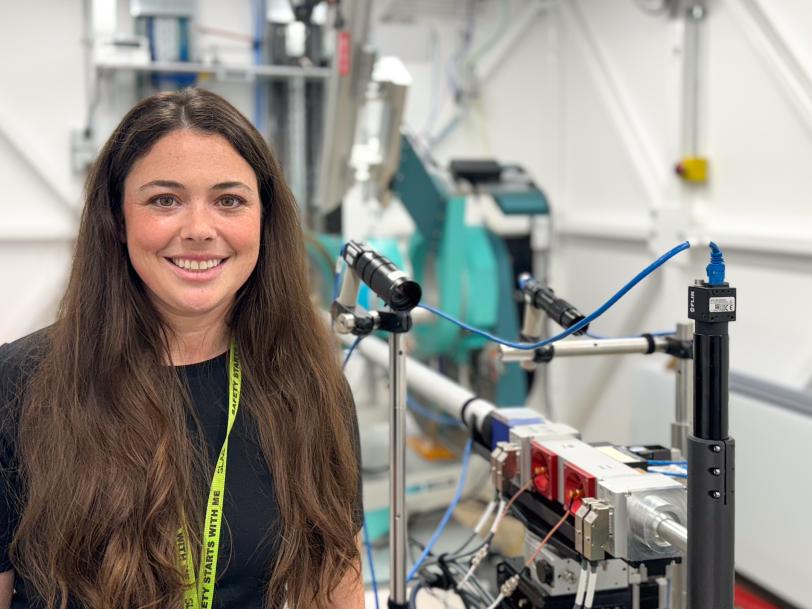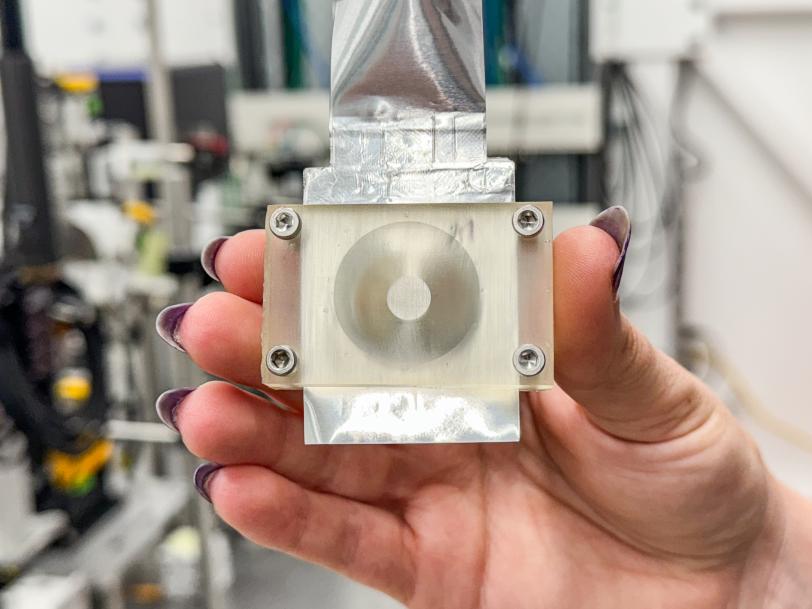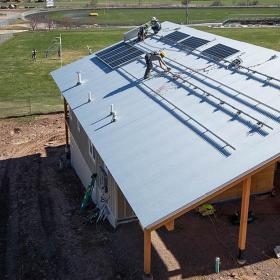Spotlight on sustainability research: Molleigh Preefer on developing new materials for fast-charging batteries
A materials chemist and SLAC associate scientist, Preefer is excited about the synergies being sparked at the new SLAC-Stanford Battery Center. She uses the powerful X-rays of SLAC’s synchrotron to watch battery charging cycles and discover ways to innovate new battery materials.
This series explores how early-career researchers are helping the DOE's SLAC National Accelerator Laboratory and Stanford University reimagine our energy future. United around the goal of sustainability, these scientists have embarked on research paths that target specific solutions, such as better batteries, alternative energy sources and a stronger electric grid. Their efforts fuel the SLAC-Stanford sustainability ecosystem where bright ideas meet powerful tools for scientific investigation.

Molleigh Preefer
SLAC associate scientist, Stanford Synchrotron Radiation Lightsource (SSRL)
PhD in Materials Chemistry, 2020
Developing new battery materials
My work focuses on batteries, which can be used to help alleviate the intermittent nature of our renewable energy sources like solar and wind. As a chemist, I like to think about different battery materials that aren’t currently in your devices. At the moment, I’m most interested in fast charging batteries, which are crucial for wide-spread adoption of electric vehicles. People have range anxiety, manufacturing costs are still high, and we are too focused on elements like nickel, cobalt and manganese in car batteries. We need to come up with new materials that work better for this specific use, and that’s where my work at SLAC’s synchrotron comes in. Once we have new candidate materials identified, we use SSRL’s bright X-rays to look at them in operation. I’ve designed different ways of taking a battery cell that you would make in the lab and bringing it onto the beamline so we can use different X-ray diagnostics while the batteries are charging and discharging. While driving your electric car you might be discharging your battery slowly, or you might step on the gas and discharge it more quickly. We can mimic those conditions at SSRL and watch how the battery performs. We can uncover how they work or why they fail, and then we iterate the materials based on the results of those experiments.

The SLAC-Stanford connection
Even in its early stages, the recently launched SLAC-Stanford Battery Center has increased dialogue between Stanford faculty and SLAC staff. I think the center will provide a lot of opportunities for collaboration between the lab and the university, and SSRL brings a very distinct flavor to that relationship with its unique tools for studying batteries. At SSRL we can keep battery materials intact, examine them and collect data very quickly – diagnostics that can’t be done in a typical lab space. At the same time, the Battery Center is building out other research tools, and those can be used to help plan and complement experiments.

Meet Molleigh Preefer: how do synchrotrons help develop fast-charging batteries?
Learn more about how materials chemist and SLAC Associate Scientist Molleigh Preefer uses the powerful X-rays of SLAC’s synchrotron to watch battery charging cycles and innovate new battery materials. She's part of the new innovative ecosystem being developed around the SLAC-Stanford Battery Center.
Angela Anderson and Sam Soon/SLAC National Accelerator Laboratory
The inspiration
The very first research experience I had was in paleoclimatology at the Lamont-Doherty Earth Observatory, which is looking at climate over thousands of years. While I didn’t choose to pursue that field, we talked a lot about climate change while I was there, and that inspired me to do applied chemistry in the sustainability space. I ended up in battery research a little bit by chance: I was looking to do some application of solid-state chemistry, and the lab I was interested in had an opening in batteries. Once I started, I decided I really liked battery research, which marries both fundamental and applied research. Early on in grad school I visited the Advanced Photon Source at Argonne National Lab. I remember walking in there, doing the experiments and being struck by the scale of collaborative science being done there. Ever since then, I knew I wanted to work at a synchrotron. I like the combination of being able to do fundamental yet still applied chemistry with access to these unique tools. When you are working on fundamental science, sustainability is a goal that helps keep you motivated.
SSRL is a DOE Office of Science user facility.
For questions or comments, contact SLAC Strategic Communications & External Affairs at communications@slac.stanford.edu.
Energy and sustainability
About SLAC
SLAC National Accelerator Laboratory explores how the universe works at the biggest, smallest and fastest scales and invents powerful tools used by researchers around the globe. As world leaders in ultrafast science and bold explorers of the physics of the universe, we forge new ground in understanding our origins and building a healthier and more sustainable future. Our discovery and innovation help develop new materials and chemical processes and open unprecedented views of the cosmos and life’s most delicate machinery. Building on more than 60 years of visionary research, we help shape the future by advancing areas such as quantum technology, scientific computing and the development of next-generation accelerators.
SLAC is operated by Stanford University for the U.S. Department of Energy’s Office of Science. The Office of Science is the single largest supporter of basic research in the physical sciences in the United States and is working to address some of the most pressing challenges of our time.






